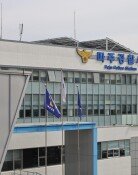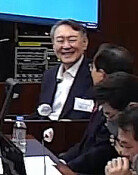[Opinion] Thirty Years of Samsungs Semiconductors
[Opinion] Thirty Years of Samsungs Semiconductors
Posted December. 07, 2004 22:49,
Koreas first ever semiconductor wafer processing company is Korea Semiconductor, established in 1974 by Dr. Kang Gi-dong. Kang went into the semiconductor industry with his experience at Motorola, but met financial distress within a year. The person who undertook this firm was Samsungs chairman, Lee Kun-hee, the director of Dongyang Broadcasting Company at the time. Lees decision was not even welcomed by Samsungs internal executives. They thought it was risky to head to hi-tech when they could not even produce TVs properly. Even in 1983, when the late Samsung chairman, Lee Byung-chull, announced the regularization of semiconductors, domestic and foreign consensus believed that it was useless.
It did not take long for the opinion to change from useless gambling to decisive decision. When Samsung Electronics first developed the 64K DRAM in 1983, there was a four-year technical difference behind the worlds best. However, it became three years in 1984, two in 1986, six months in 1988, and finally in 1989, Samsung caught up. At last, in 1992, Samsung took the lead in DRAM by developing the worlds first 64M DRAM. For the last 30 years, Samsung sold 110 trillion won worth of semiconductors, netting 29 trillion won.
Samsungs glory today is due to researchers, who produced the worlds best technology by adding creativity to the advanced technology that they learned, and to workers, who worked day and night to produce better quality at a cheaper price. Whatever the background, there would have been no semiconductor business at all without the CEOs determined decision to invest. Intels Andy Grove, in an interview with domestic paper in 1994, said that Samsungs competitive origin comes from technical and financial power backed up by other subsidiary companies.
There are many business words that have completely different images but are actually the same. Owner managers decisive leadership can be seen as emperor management. Diversified management is the same as industry variation. Some call sharing capital among affiliated companies an efficient use of capital and some, the start of falling down together. To those who only see the negative side, the myth of Samsungs semiconductor will be an everlasting riddle.
Chun Kwang-am, Editorial writer, iam@donga.com




![지하철 타고 가는 북한산성…외국인도 반한 ‘K등산 맛집’[전승훈 기자의 아트로드]](https://dimg.donga.com/c/138/175/90/1/wps/NEWS/IMAGE/2026/01/10/133120824.1.jpg)

![두쫀쿠가 뭐라고…영하 8도에 아이들 1시간 줄세운 어린이집 [e글e글]](https://dimg.donga.com/c/138/175/90/1/wps/NEWS/IMAGE/2026/01/09/133126969.3.jpg)
